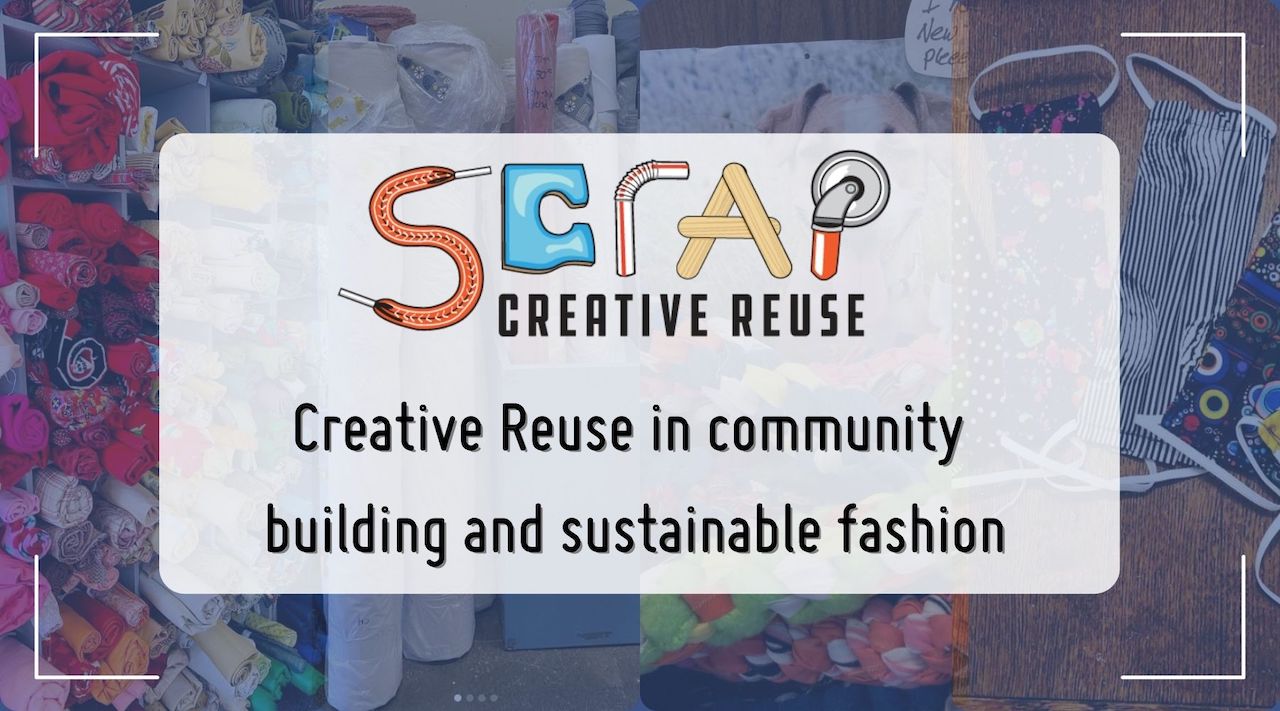
Creative reuse, also known as upcycling or repurposing, is a necessary and essential element of both waste reduction and sustainable fashion. While recycling processes materials to create new products that follow a linear model towards waste, reuse is a circular design that lengthens the life of an item and offsets materials entering the waste stream. Creative reuse can be defined as the addition of creativity to an already manufactured item to bring about a new function. Reuse is a central tenet of sustainability, and the added element of creativity further expands the possibilities of reuse. Fabric and textile recycling and reuse are gaining attention beyond the world of fashion, and sustainable practices regarding clothing production, consumption, and disposal are entering common conversations.
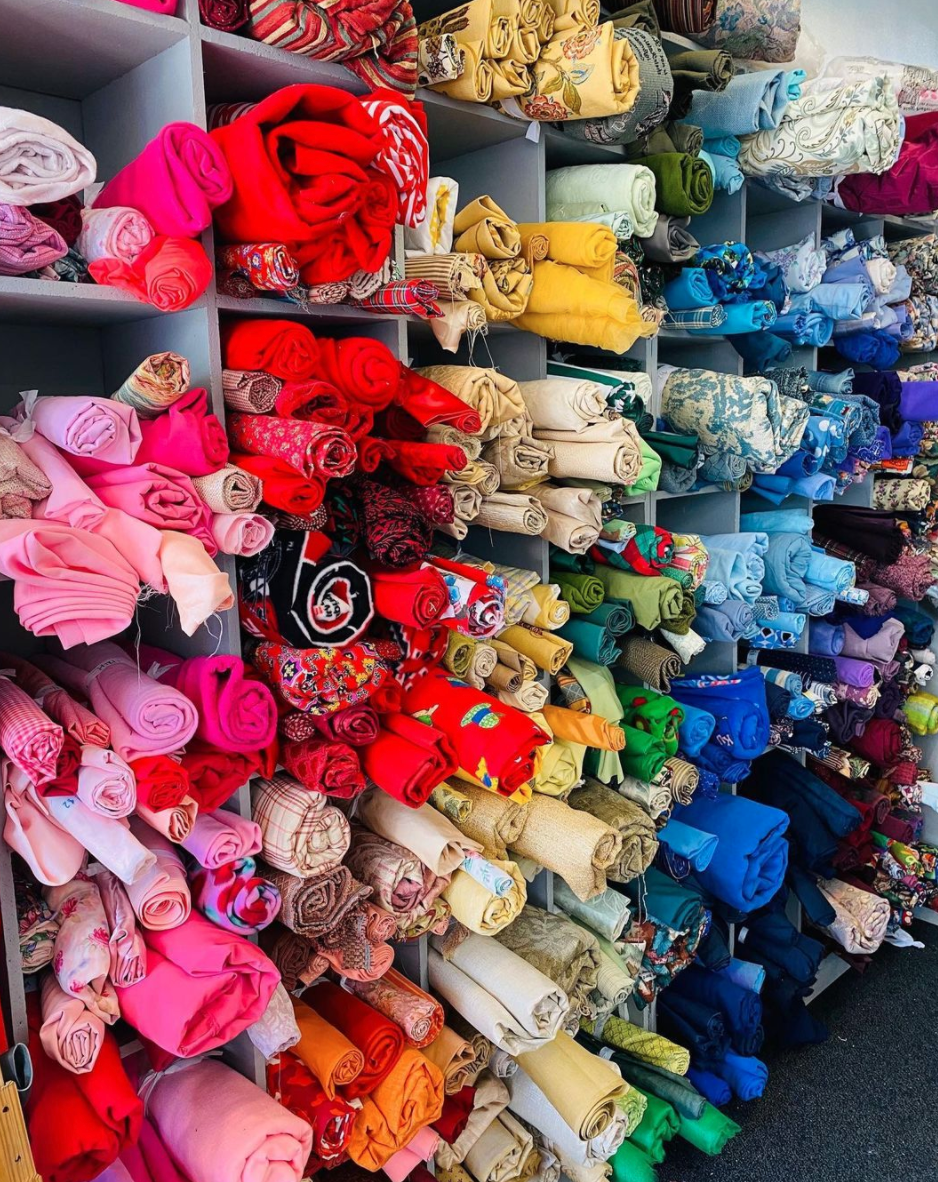
Reuse Fabric at SCRAP Creative Reuse - Ann Arbor
- while using fabric scraps to create materials like insulation, carpet padding, furniture lining, and moving blankets. Creative reuse of fabric, textiles, and sewing notions provides materials for hobbyists, sustainably-minded creatives, and slow fashion designers. Thrift and vintage shopping, mending, repurposing, and swapping clothes has seen a resurgence of interest with notable economic and environmental advantages. Younger generations not only realize the financial savings to a thriftier lifestyle and learning basic sewing skills, but they are also the most environmentally conscious generations bearing the greatest ecological burdens. In order to adapt to and offset climate change issues, we need spaces and places that make creative reuse options accessible.
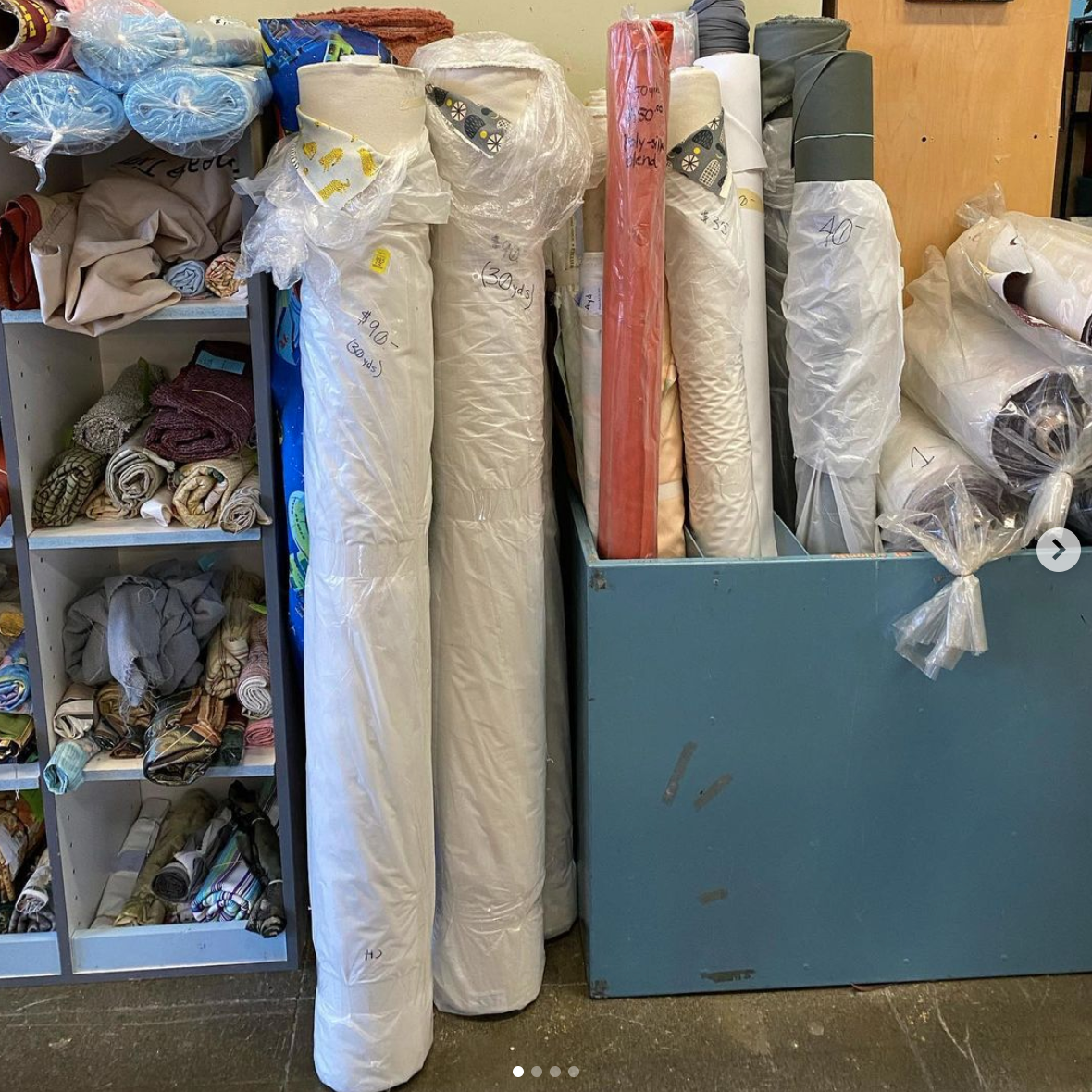
Bulk Textiles at SCRAP Creative Reuse - Portland
Creative reuse centers are often community hubs that support creative reuse by collecting discarded materials from the public and reselling these items to the public for a bargain, or donate them to teachers, organizations or other groups for further reuse. Thrift stores and vintage shops will accept clothing that fits their criteria, while creative reuse centers may accept bulk and leftover fabrics, sewing notions, and fabric scraps. Artists, educators, and families can easily find materials and become inspired. Reuse centers often strive to meet their community’s needs, and communities with a variety of opportunities for reuse helps with greater waste reduction.
Single use plastic simply to hold your produce, then another plastic bag to hold your produce bags and groceries, on a regular basis adds up. Five trillion plastic bags are created annually for global use, and we only recycle about 1 – 3% of plastic bags worldwide. These plastics are used in North America for an average of 12 minutes, and will only fully degrade after 1,000 years. Plastic bag recycling systems are dependent upon store supply chains that rely on economies of scale to gather enough single use plastics that can be recycled and converted to new materials. Recycling only works if there is a massive amount of plastic produced, and more stories are now known that plastic recycling is not all the public has trusted it to be, and much of our plastic is buried in our landfills even if we toss them into our home recycling bins.
Reusable tote bags, produce bags, lunch bags, and beeswax wraps have become common household items, with grocery stores and markets selling reusable bags, and makers providing how-to instructions to help sustainably-minded shoppers create their own. Finding fabrics from a creative reuse center has a compounded positive effect. The “raw” materials acquired through reuse offsets the need to purchase entirely new fabrics and sewing materials. Sewing a reusable tote bag helps develop basic sewing skills that can be used in a variety of other minor sewing projects. Combined with the use of reusable produce bags, beeswax wraps, and other reusable items to pack your meals – you can make a daily positive impact with the habit of reuse.
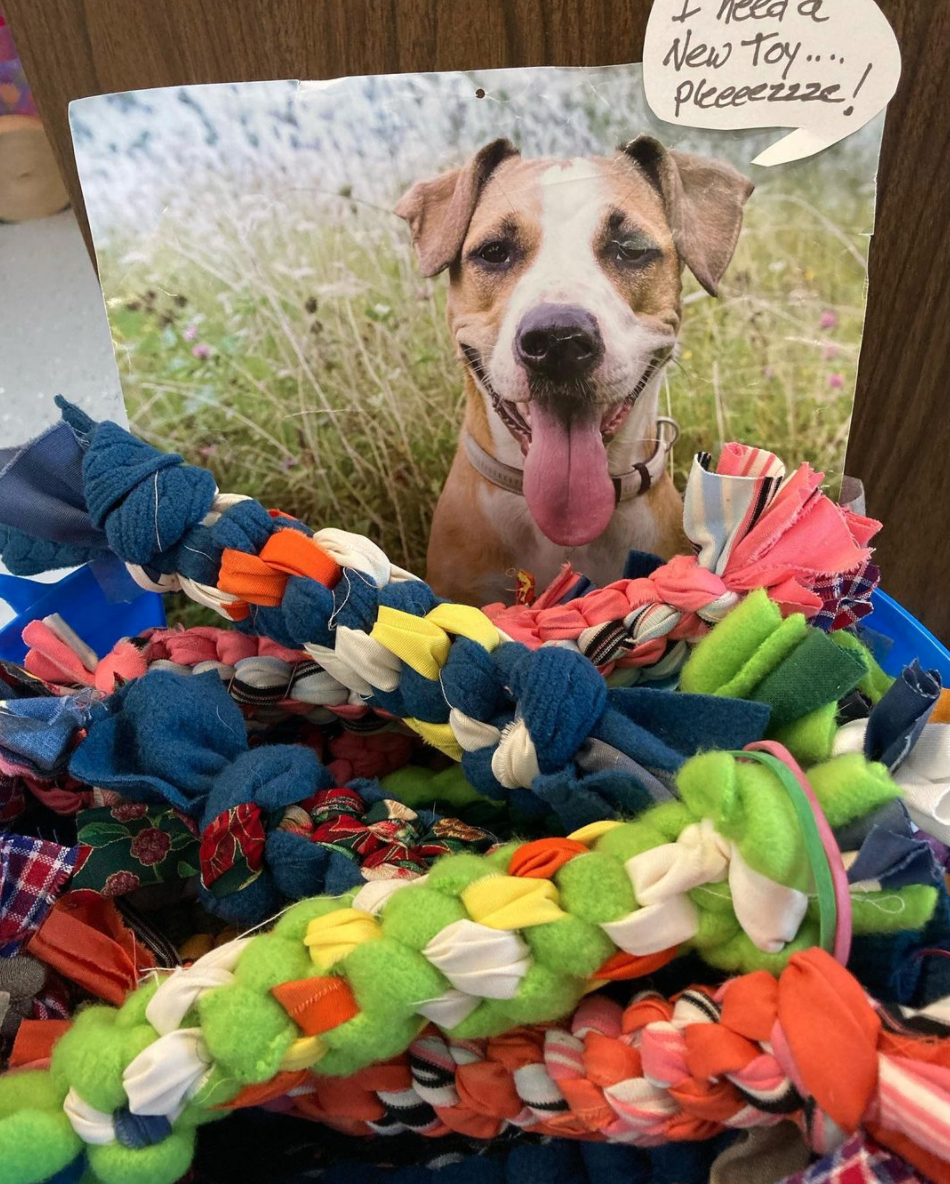
Reuse Fibers Handmade Pet Toys at SCRAP Creative Reuse - Baltimore
- is mending and reusing clothing. This is already common practice among working class families and outside of North American and Western European lifestyles. The majority of families worldwide understand the importance of increasing the longevity of their clothing. And it was common practice in North America and Europe until the end of the 20th century when consumerism became embedded in our lifestyles. In an era of necessary adaptation and mitigation against the effects of climate change, looking to the past can provide ideas for a sustainable future. Mending clothing and transforming items to become “new” through creative reuse increases clothing lifespan and adds uniqueness.
- and yard/garage/sidewalk sales have also been common in communities to increase the lifespan of materials while generating a sustainable exchange of goods within communities. Improving circular economics and exchange systems in local neighborhoods creates more resilient communities. In recent decades, groups are now working to help educate shoppers and exchangers about the economic and ecological benefits of community swaps and sales. Community groups now discuss the necessity of sustainability explicitly and actively promote creative reuse and upcycling. They provide content, materials, ideas, education, and support to give individuals opportunities to discover how they want to participate in a more sustainable future.
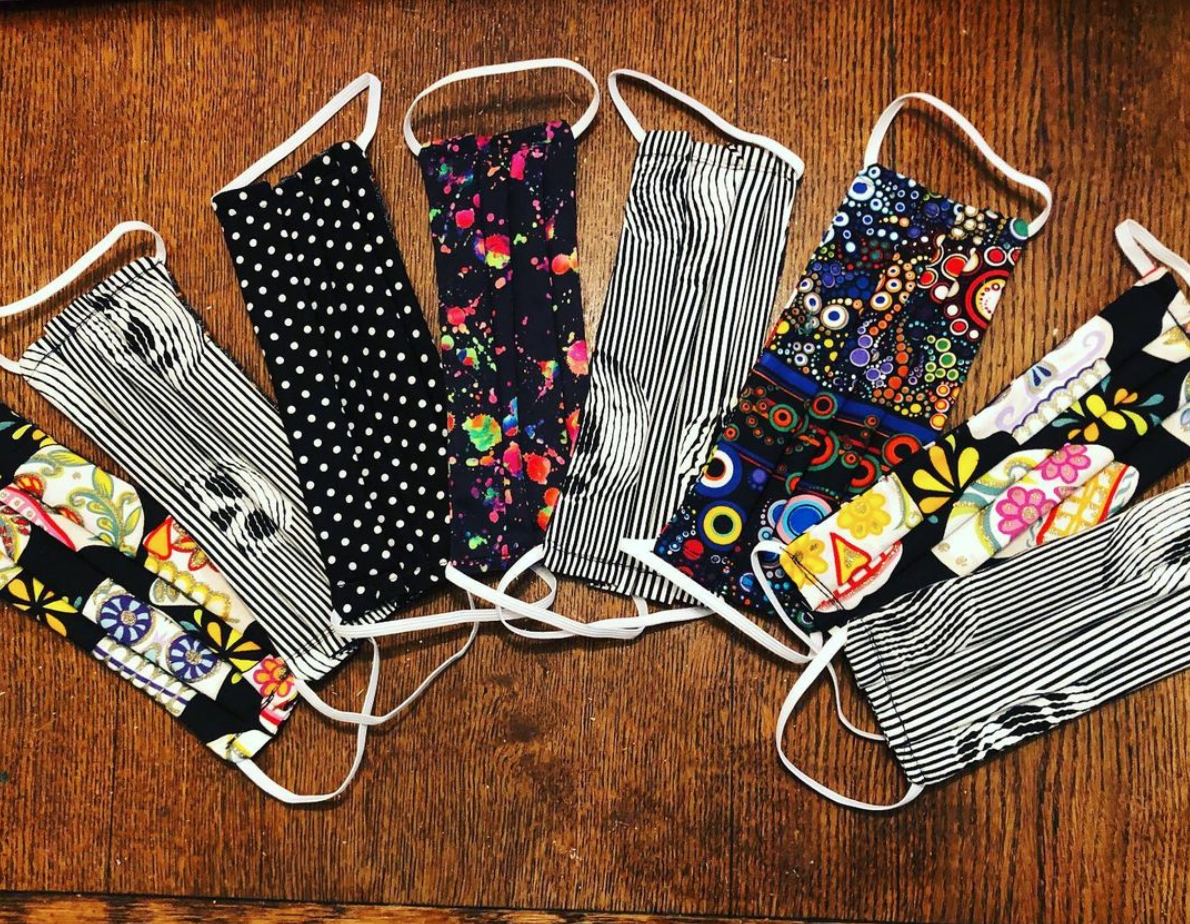
Reuse Fabric Handmade Masks at SCRAP Creative Reuse - Richmond
When COVID-19 became more fully realized as a public health issue, masks suddenly became a common item featured in our daily lives. We saw groups mobilize and begin sewing reusable cloth masks in mass in order to supply communities with necessary supplies while allowing health care workers access to the standard of masks they required for their work. Communities came together to source materials and creatively reuse fabrics and scraps in order to meet a public health need. When elastic was in short supply, crafters began using bias tape, shoe laces, and other creative reuse materials for straps. Makers learned and shared the proper designs, sewing methods, and layers of fabrics and blends suggested to create effective masks that can reduce transmission. This sharing of materials, knowledge, and care helped reduce transmission that likely prevented additional illness and deaths.
- we can move beyond adjusting to the changes in our lifestyles (from using reusable bags to wearing masks at the grocery store), and begin to add creativity and uniqueness to these adaptations. Handmade mask makers and slow fashion designers have also begun to create masks that can be accessories, or center pieces, for outfits. Designers incorporate sustainable practices and creative reuse into unique mask making – creating in small batches and zero waste designs. Designs showcase variety, diversity, uniqueness, and sustainability. By accepting, normalizing, and bringing joy to these new realizations in adjusting our habits, we can improve our physical and mental health.
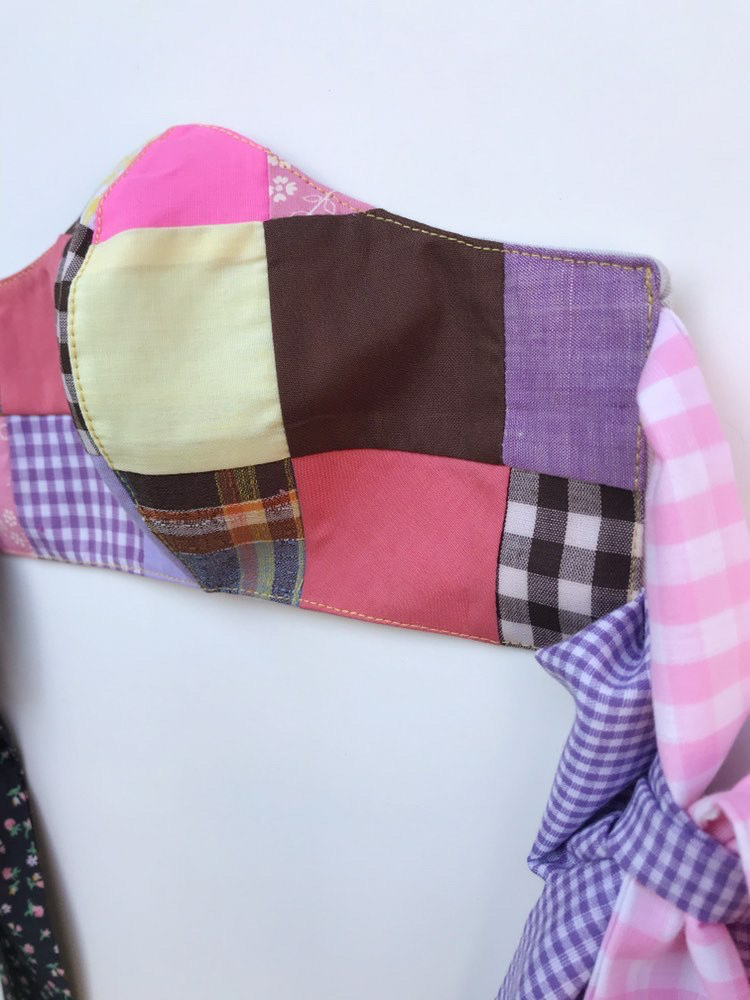
Reuse Fabric Handmade Mask by sustainable maker rare gem - instagram.com/raregem.collection
Artists and creatives dream up unique ideas, motivate themselves, and inspire others in an ongoing spiral of inspiration and imagination. Sustainable fashion and creative fabric reuse practices are essential, and will only become more necessary in a planet affected by COVID-19, global climate change, and the need for community re-building. This is a call to fashion creatives, designers, makers, and hobbyists to position sustainability as a primary concept in creative creations. We aren’t sure what the future may be like, and the pathways toward sustainability will need to involve individuals and institutions traveling towards common goals. Creative reuse provides a crucial element and framework to solve current and future environmental problems related to production, consumption, and waste reduction.
.png?216x89)
SCRAP is a 501(c)(3) nonprofit organization, Federal Tax ID 93-1270807.
Donations are tax deductible as allowed by law.
©2021 SCRAP Creative Reuse All rights reserved. SCRAP™ is a trademark of SCRAP Creative Reuse | Website by Morweb.org
